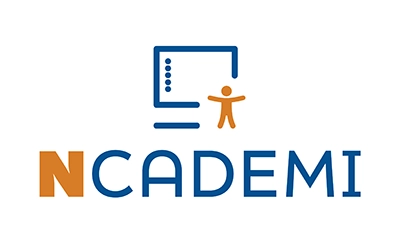The self-assessment tools are designed for state and local educational agencies (SEAs and LEAs) ready to implement one or both sets of Quality Indicators. Leadership teams are directed to the Hexagon Tool Readiness Protocol to evaluate the fit and feasibility of implementation. Once ready, agencies can use the self-assessment matrices to pinpoint strengths, gaps, and redundancies in their systems.
Download the Self-Assessments:
Conducting Self-Assessments
Prior to conducting a self-assessment, ensure that critical perspectives representing multiple areas of the agency are available for input. This input will optimize the effectiveness of an agency’s implementation process. Some examples of the roles and responsibilities that should be considered for input include:
- Administration from both general and special education
- Technology (education, information, instruction, and assistive)
- Instructional materials adoption
- Curriculum and instruction
- Assessment
- General education
- Special education and related services
- Procurement
- Finance
- Students, staff, parents and caregivers, and community members with and without disabilities
Using the Self-Assessment Matrices
With agency leadership and cross-disciplinary staff engaged, teams should begin the self-assessment process for a Quality Indicator by thoroughly reading its statement and intent, as well as each Critical Component. A matrix with descriptions of four levels of implementation is provided for each Critical Component of the Quality Indicator:
- Level 0: Not Started
- Level 1: Emerging, meaning the agency is laying the groundwork for implementation
- Level 2: Operationalizing, meaning the agency is beginning to apply practices toward implementation
- Level 3: Scaling & Sustaining, meaning the agency is embedding practices for full implementation
Each level describes specific actions an agency may be taking to make progress toward full implementation of the Critical Component. Teams deliberate the continuum of implementation levels and select the description that most accurately describes the agency’s current practices. The corresponding score is entered in the final column of the matrix, labeled “Rating,” along with the date of the assessment.
Recording Rationales
During the deliberation process, the team records the key points that informed the selected score. This information is essential for future reference during the next cycle of self-assessment, and as team turnover happens over time.
Recording Action Items with Timelines
To facilitate active implementation of the Quality Indicators, teams are prompted to record action items for progressing toward the next level. Descriptions of agency practices are embedded within the scoring matrix, aligned to each level. Teams are encouraged to use these, as well as novel ideas generated by team members, for inspiration when identifying action items. Each action item should have a timeline to completion.
Recording the Date of the Next Assessment
Cycles of self-assessment are necessary for an agency to achieve continuous progress toward implementation and sustainability. The last step is to set a date for the next self-assessment of the Critical Component. Teams should set the next self-assessment date based on the timelines established for their action items.
Progress Monitoring and Continuous Improvement
The results of the first cycle of self-assessment, whether for a single or all Quality Indicators, provide the agency with a baseline to build from. Like all systems change endeavors, implementing the Quality Indicators is an ongoing process that must be sustained over the long term. The highest level of implementation is intentionally labeled “Scaling & Sustaining” for this reason. Without continuous monitoring through cycles of self-assessment, and taking actions when necessary to sustain progress, the system is at risk of remaining stagnant or slipping backward.
Tracking Your Agency’s Cycles of Self-Assessment
Teams are encouraged to upload the self-assessment tool to a collaborative online workspace approved by the agency. Versions can be identified by date when saving the file after each cycle of self-assessment (e.g., “QI_cycle_x_month_day_year” where “x” indicates the cycle number). Completed cycles can be archived on an agency’s shared file storage system and a backup folder. A common protocol should be shared with all team members for accessing, updating, saving, and storing each self-assessment cycle.
